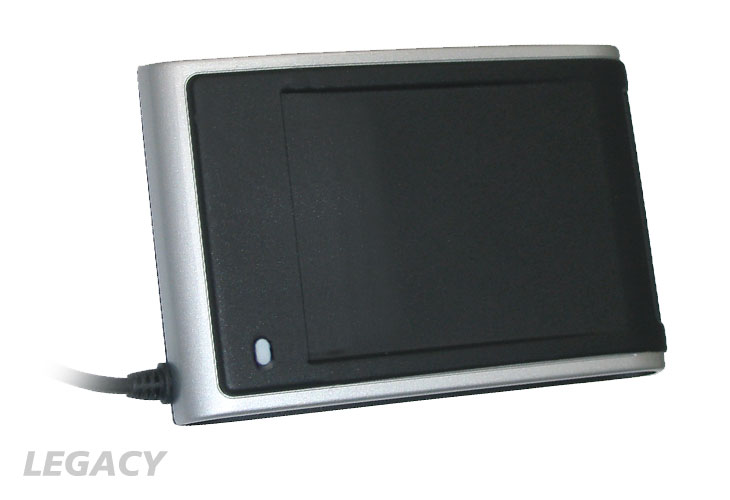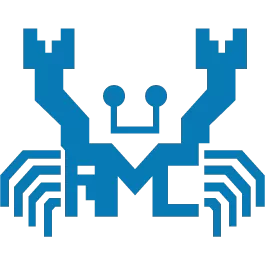Global Smart Card Readers Market Involving Strategies, Price Analysis, And Forecast by 2021–2026 Global Smart Card Readers Market Added by IndexMarket. Monday, January 11 2021. Gemalto, Giesecke & Devrient, Morpho, Oberthur Technologies. Indexmarketsresearch January 8, 2021. Format On-line Supplement ISBN-13: 263: Availability: Live. Other Student Resources. Discipline Resources. 3D CAD Curriculum. Janis Anne Giesecke was born on Jan 29, 1945 in Llano, Texas to Anna Mae Garrett and Hugh O. Eckel, where she lived until age 9. Her mother later married Don H. And they moved to Marble Falls. She had one brother, Don H.
- Giesecke & Devrient Card Reader Driver Download Windows 10
- Giesecke & Devrient Card Reader Driver Downloads
The Giesecke family name was found in the USA, the UK, and Scotland between 1840 and 1920. The most Giesecke families were found in the USA in 1920. In 1840 there were 3 Giesecke families living in Louisiana. This was 100% of all the recorded Giesecke's in the USA. Marlys GIESECKE passed away in Mpls, Minnesota. The obituary was featured in Pioneer Press on January 23, 2021.
Giesecke+Devrient also known as (G+D) is a German company headquartered in Munich that provides banknote and securities printing, smart cards, and cash handling systems.
History[edit]
Founded in 1852 by Hermann Giesecke and Alphonse Devrient, the firm initially specialized in high-quality printing, notably currency and securities printing.[1] From the 1850s to the 1870s the firm printed some of the important biblical editions of Constantin von Tischendorf. The partnership's reputation for quality work was confirmed at the 1867 international exhibition in Paris.[2]
Giesecke+Devrient supplied currency during the inflation in the Weimar Republic in the 1920s, one of the most prominent cases of hyperinflation. It also printed tickets to the 1936 Olympics in Germany and did business with Spain under Franco.[3] Its role in facilitating the destruction of the economy of Zimbabwe through another printers' breeding of hyperinflation under Mugabe is well-known.[3]
In the modern period, G+D has expanded operations to include banknote processing, smart cards, identification systems, and e-payments.[4] The firm is the world's second largest supplier of banknotes,[5] with annual revenues of $2.45 billion.[3] They have over 11,600 employees, and some 50 subsidiaries and joint ventures around the world.[6] The company operates printing facilities in Germany (Munich, Leipzig), as well as Kuala Lumpur, Malaysia. G+D currently supplies euro notes for the German Bundesbank; and the company supplies banknotes for many other nations.[7]
In 1989, the Komori technology for printing banknotes was introduced in Europe when G+D ordered a small printing machine.[8]

In 1999, Giesecke+Devrient acquired the British American Bank Note Company, and renamed it to BA International Inc.[9]
In 2000, Giesecke+Devrient established its North American headquarters in Dulles, Virginia, a suburb of Washington, D.C.
The firm produces special paper for use in instruments such as banknotes, checks, bonds, certificates, passports and other identification, and tickets.
In addition to Germany, Giesecke+Devrient has printed banknotes for other various countries through the years, including Cambodia, Croatia, Ethiopia, Guatemala, Jamaica, Lithuania, Peru, Zaire, and Zimbabwe. In Japan, G+D is active in the fields of cards and banknotes.[10]
In October 2002, Giesecke+Devrient, along with the Information Security Group, Royal Holloway, University of London and Vodafone set up the Smart Card Centre, which is part of the ISG at Royal Holloway.
In 2012, Giesecke+Devrient closed its Banknote Printing Operation in Ottawa, Ontario, Canada.[11]
In January 2015, G+D founded Veridos GmbH in Berlin as a cooperation with Bundesdruckerei, with G+D holding 60%. This company is offering secure identification products for governments, such as ID cards, passports, and automated border control systems.
In 2017, Giesecke+Devrient joined the Verimi identification platform, which together with more than a dozen well-known German and foreign companies, offers a portal for the protection of digital identity and personal data.[12] G+D has held a 10% stake in Verimi since January 2018.[13]

In April 2018, the previous Giesecke & Devrient GmbH (G&D) was renamed to Giesecke+Devrient GmbH (G+D) as the mother company. The previous business units were spun off as separate fully owned daughter companies as follows:
In 2018, Build38 was created as a spin-off and took over part of the Mobile App Security and Intelligence portfolio. It has its head office in Munich, development in Barcelona and sales office in Singapore. [14]
- Banknote related business into G+D Currency Technology GmbH (G+D CT) which owns the paper mill Papierfabrik Louisenthal GmbH (PL) with its banknote substrates and security elements, and the banknote printing works in Malaysia.
- Smart card related business with payment cards, SIM card and eSIM and security solutions into G+D Mobile Security GmbH (G+D MS).
In 2019, G+D took a 4.85% stake in the Berlin brighter AI Technologies GmbH, focusing more on the area of biometric identity protection, such as facial anonymization.[15][16]
Anti-counterfeiting[edit]
In November 2009 Giesecke+Devrient announced plans to form a new company with SAP AG and Nokia Corp., named Original1, to deliver product authentication and anti-counterfeiting services globally. The headquarters is in Frankfurt, Germany. Original1 offers user authentication, end-to-end encryption of the information flow and database encryption.[17] Original1 On-Demand is an online product for brand product protection.[18]
As of August 2012, Original1 is in liquidation. The supervisory board (40% SAP, 40% Nokia, 20% Giesecke+Devrient) dismissed the 3 managing directors with 6 months notice and 6 months severance. The remaining employees were dismissed with 3 months notice and no severance.[citation needed]
Zimbabwe involvement[edit]
Giesecke+Devrient have a history of doing business with Rhodesia and its successor state Zimbabwe going back to 1965, and they have been supplying security paper for banknotes, passports and other instruments to the government of Zimbabwe throughout the hyperinflation in Zimbabwe.[3]

In June 2008 U.S. officials announced they would not take any action against the firm.[5]It was reported that on 1 July 2008 company's Management Board decided to cease delivering banknote paper to the Reserve Bank of Zimbabwe with immediate effect. The decision was in response to an 'official request' from the German government and calls for international sanctions by the European Union and the United Nations.[19] Dr. Karsten Ottenberg, CEO and Chairman of the G+D Management Board, explained:
'Our decision is a reaction to the political tension in Zimbabwe, which is mounting significantly rather than easing as expected, and takes account of the critical evaluation by the international community, German government and general public.'[19]
References[edit]
Notes
- ^G&D: '1852: 'Officin für Geld- und Werthpapiere.'Archived 2006-10-17 at the Wayback Machine 2009.
- ^Faulman, Karl. (1882). Illustrirte Geschichte der Buchdruckerkunst, pp. 575-576.
- ^ abcd'Zimbabwe Can't Paper Over Its Million-Percent Inflation Anymore; Under Pressure, German Company Cuts Off Shipments of Blank Bank Notes to Mugabe,' Wall Street Journal. July 2, 2008.
- ^Böttge, Horst; Mahl, Tobias; Kamp, Michael (2013). Giesecke & Devrient Munich (ed.). From Eurocheque Card to Mobile Security 1968 - 2012. Battenberg Gietl Verlag. ISBN978-3-866-46549-7.
- ^ ab'U.S. won't punish Giesecke+Devrient over Zimbabwe aid,' Los Angeles Times. June 19, 2008.
- ^G&D: 'Profile,'Archived 2010-07-13 at the Wayback Machine 2007.
- ^G+D: Printing
- ^Bender, Klaus W. The Moneymakers, p. 77.
- ^'NEW ACQUISITIONS'. BoC Museum. Retrieved 4 April 2020.
- ^G&D: 'Japan: A Country Portrait; Reforms bear fruit.'Archived 2007-10-28 at the Wayback Machine 2009.
- ^'Giesecke & Devrient Restructures Banknote Printing Operation in Ottawa, Canada'. Digital Journal. 2011. Retrieved 4 April 2020.
- ^verimi. Unsere Leitlinien., Retrieved on 8th of July 2020.
- ^Giesecke+Devrient. Jahresbericht 2018(PDF; 1,7 MB), Retrieved on the 8th of July 2020.
- ^'Giesecke+Devrient Starts New App Security Company'. Digital Journal. 2019. Retrieved 5 June 2020.
- ^Giesecke+Devrient investiert in Startup Brighter AI Technologies., Retrieved on 8th of July 2020.
- ^How facial recognition is improving privacy technology, Retrieved on 8th of July 2020.
- ^Cable, Josh. 'SAP, Nokia and Giesecke & Devrient to Establish Brand-Protection Service,'Archived 2010-06-23 at the Wayback Machine 'IndustryWeek (Cleveland, Ohio). November 13, 2009.
- ^Original1 GmbH 'What is Original1 On-Demand?'.
- ^ abOhlden, Anna. 'Giesecke+Devrient Halts Deliveries to the Reserve Bank of Zimbabwe,'Archived 2008-07-05 at the Wayback Machine PRNewswire. July 1, 2008.
Bibliography
- Bender, Klaus W. (2006). Moneymakers: the Secret World of Banknote Printing. Weinheim, Germany: Wiley-VCH Verlag. ISBN978-3-527-50236-3; OCLC 69326754
- (in German) Faulmann, Karl. (1882). Illustrirte Geschichte der Buchdruckerkunst: mit besonderer Berücksichtigung ihrer technischen Entwicklung bis zur Gegenwart. Vienna: A. Hartleben. OCLC2847445.
External links[edit]
| Wikimedia Commons has media related to Giesecke+Devrient. |
- Documents and clippings about Giesecke+Devrient in the 20th Century Press Archives of the ZBW
Bertram E. Giesecke, architect, was born on July 2, 1892, in New Braunfels, Texas, to Hulda (Gruene) Giesecke and Frederick Ernest Giesecke. His father was a professor of architectural engineering at Texas Agricultural and Mechanical College (present-day Texas A&M University) and then chairman of the department of architecture at the University of Texas in Austin (UT). Following in his father’s footsteps Bertram received his bachelor of science degrees in architecture from Texas A&M in 1911 and from the University of Texas in 1913; he had the honor of being the first graduate from UT’s architectural school.
Giesecke married Lois Yett in Austin on June 14, 1917. Later in life, they had two sons, Bertram Jr. and William. During World War I Giesecke served in the Signal Corps of the United States Army, where he achieved the rank of first lieutenant. The 1918 Austin City Directory listed him as a member of the architectural firm of Kuehne, Chasey & Giesecke. In 1920 he was an architect in the firm of Walsh & Giesecke.
Bertram Giesecke and former UT classmate, August Watkins Harris, Sr., formed the architectural firm of Giesecke & Harris in 1921. The firm was active throughout the state of Texas and designed residential, commercial, and public buildings. Three of their buildings are listed on the National Register of Historic Places, and a number of others are Recorded Texas Historic Landmarks. In 1941, with the impending threat of American entry into World War II, the partnership dissolved after Harris joined the United States Army.

Giesecke & Devrient Card Reader Driver Download Windows 10
In 1942 Giesecke formed the firm of Giesecke, Kuehne and Brooks. Major projects included the supervision of the building of the Commodore Perry Hotel and Perry office building in Austin. He was a member of the American Institute of Architects (AIA), Texas Society of Professional Engineers, and served as president of the Texas Society of Architects in 1946. He served in the federal and state government in various positions: charter member of the board of governors of the National Association of Housing Officials (1933), chairman of the Texas Relief Commission (1933–34), consulting architect for the United States Treasury Department (1935), member of the Texas Postwar Planning Commission (1943), chairman of the Texas Roadside Council, member of the Texas Centennial Commission, and member of the administrative committee of the Texas Safety Association. At the time of his death he was chairman of the Department of Defense Housing Commission and a gubernatorial appointee to the State Hospital Advisory Council.
Giesecke & Devrient Card Reader Driver Downloads
Giescke served as the Third Division Commander of the American Legion (1942–43), commander of the Travis County Post No. 76 of the Legion (1920, 1940), and Commander of the American Legion Texas Department (1946). He also held memberships in the Austin Chamber of Commerce, Sons of the Republic of Texas, and Sons of the Confederacy. He was a Methodist. Bertram E. Giesecke, at the age of fifty-eight, died of a heart attack on December 6, 1950, in Austin, Texas. He was buried in Austin Memorial Park Cemetery.
